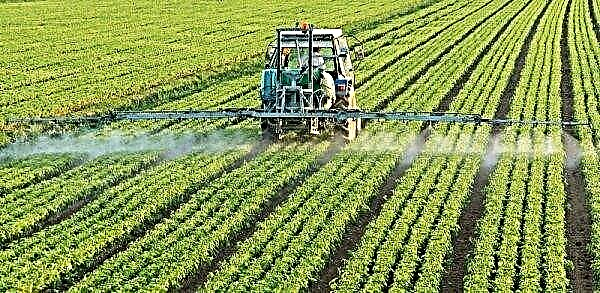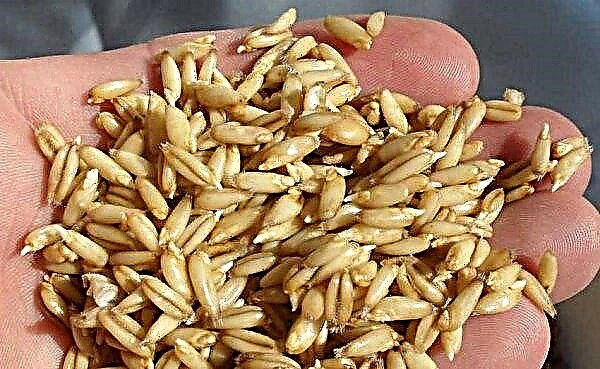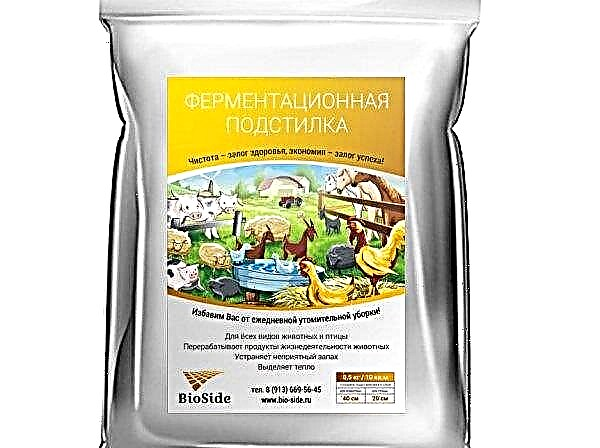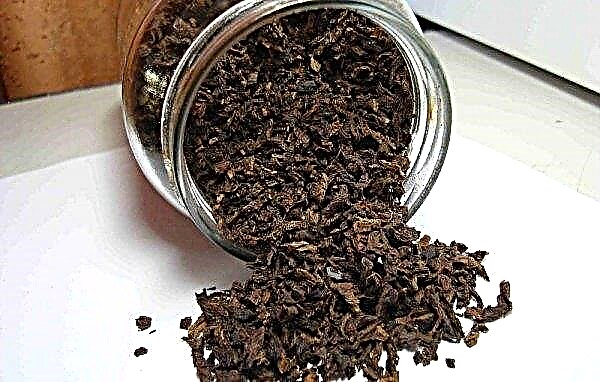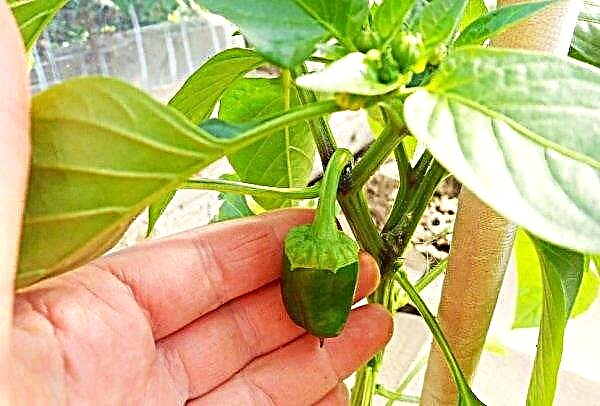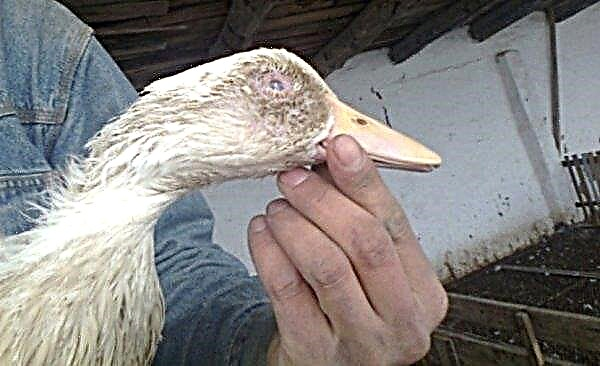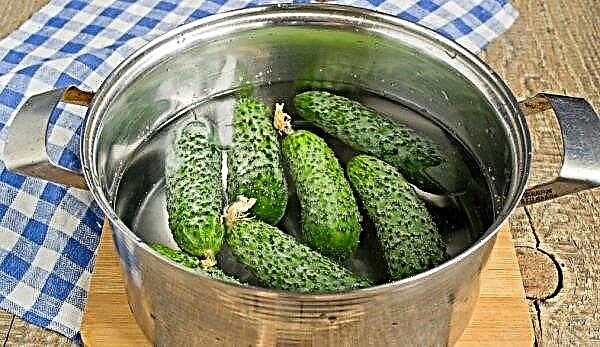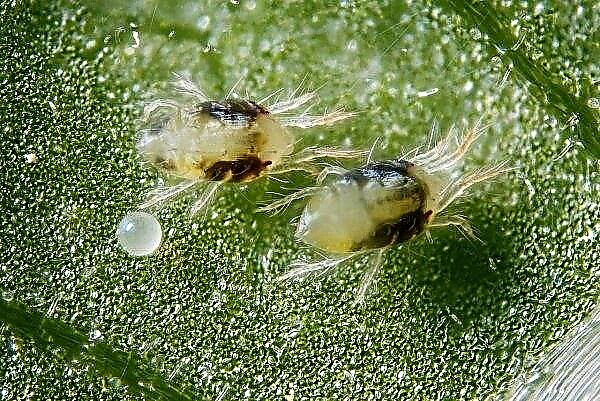Slime onions consume green feathers. The plant is frost-resistant and begins its vegetation as soon as the snow melts - this allows you to use it as the very first greenery. Consider the description, composition and usefulness of onion-sludge, as well as how to grow and harvest it.
Description and characteristics of the variety
This species is a perennial culture and belongs to the genus Luke. It is able to tolerate frosts down to –40 ° С.
Bulbs up to 2 cm wide have the shape of a cylinder or cone with a thin husk. They grow from a horizontally located rhizome. Next comes a thick stem growing from 25 to 70 cm with 6–8 linear gray-green leaves up to 30 cm long. Each leaf bends helically around an axis. Fragile foliage with a break gives off a slightly sharp mucous juice, has a garlic smell.
The plant blooms in the second year of life, in July. It throws an umbrella round inflorescence with many small flowers of pinkish tones. The fruit is a box that is larger than the perianth.
Its young feathers begin to appear in late March or early April, and you can cut them all summer season.
Did you know? Slime onions look aesthetically pleasing, and its flowers can decorate not only garden beds, but also a flower bed, along with, for example, decorative alliums. Their inflorescences can be used as dried flowers.
Chemical composition
Leaves of onion-sludge contain vitamins C, E and PP, K, A, group B, as well as carotenoids. Like any green plant, slime onions contain a lot of chlorophyll and have a rich mineral composition. Of the macro- and micronutrients, it contains potassium, manganese, zinc, iron, magnesium, zinc, nickel and molybdenum. Also in it are volatile, flavonoids, essential oils.
Useful properties of onions
- Slime onions are good for humans for the following reasons:
- contains vitamins and materials necessary for the normal functioning of the body;
- improves metabolism and digestion;
- indicated for anemia, as it contains a lot of iron;
- good effect on the functioning of the genitals and reproduction;
- increases immunity and inhibits pathogenic microflora;
- is the prevention of cancer;
- activates the work of the internal glands;
- positively affects the work of the cardiovascular system;
- improves appearance because it prevents aging and strengthens nails and hair;
- mucous substances allow the use of this product in diseases of the gastrointestinal tract (ulcers, gastritis).
How to grow onions on the site?
This useful greenery can be grown by yourself in your garden.
Important! With exacerbations of the gastrointestinal tract or allergies, onion-slime should be excluded from the diet. It should be used with caution in nursing mothers and with gout.
Optimum seeding time
Sowing seedlings is carried out in the second half of February or early March. In mid-May, transplanted seedlings are planted. Seeds are also planted in open ground from April to May, when the ground warms up enough.
You can make winter crops shortly before the onset of frost.
Growing conditions
For planting, a well-lit area is selected without the possibility of stagnation of water in the spring and after heavy rains - in this case, high beds are needed. Perhaps a close occurrence of groundwater, but without swamping. All types of onions like moderate humidity.
It is necessary to plant the vegetable in question at a place where cabbage, tomatoes, cucumbers, radishes, as well as potatoes, beans and cereals were previously grown. The optimum temperature for the active vegetation of this plant crop is + 20 ° C.
Important! Do not plant slime onions after bulbous crops.
Soil and fertilizer
Slime prefers loamy and peaty soil with a neutral reaction (pH 6.0–7.0). He does not like acidic soils. Before planting seeds or bulbs, the site must be prepared: it should be dug up and organic fertilizers applied. It is not worth using mineral fertilizers only if the soil is not fertile.
Plantings should often be thinned and fertilized with humus or rotted manure in the fall (6–8 kg per 1 m²). In spring, you can add more humus (5 kg per 1 m²) along with the introduction of mineral fertilizers (30 g of ammonium nitrate, 30 g of superphosphate and 15 g of potash fertilizer).
The dug up area should be leveled with a rake and slightly compacted so that the seeds do not sag and go deep into the ground.

Planting onions
Onions can be planted with seeds, or you can use the vegetative method. When planting seeds, you must first grow seedlings. This method makes it possible to get the onion crop early. The landing itself is carried out in the second half of February. For this purpose, soil from turfy soil and humus in equal parts is suitable.
Before use, it must be decontaminated - for example, warm in the oven or microwave. Then it should be poured with a weak solution of manganese, covered with plastic wrap and put in a warm place for several days.
Seeds also need to be prepared. They need to be warmed up by putting on a heating radiator 2 weeks before sowing. Before planting, you need to carry out the disinfection process by holding the seeds in a solution of manganese. Then they must be washed in water and dried. After this, they land in a container with prepared soil.
In open ground, seeds are planted in mid-May. Seed is planted to a depth of about 1 cm in rows. The gap between the rows is about 40 cm. The soil on top of the seeds should be slightly tamped. After emergence, it is necessary to thin out the area with planting, leaving a distance of 15 cm between plants.Important! At the same place without transplantation and propagation, the described vegetable can grow no more than 5 years. If you leave it for a longer time, then there will be a sharp decrease in yield.
Vegetative propagation is carried out at the end of the summer period or in early September. For reproduction, specimens 2-3 years old are ideal. For this purpose, they dig out the slime bushes and divide each into several parts. At the same time, each onion root should have four bulbs. Then all the parts are planted separately in the early spring.
Video: Propagation of slime onions in a vegetative way
Landing care
Slime onion is considered an unpretentious culture, and it is not troublesome to take care of it.
Watering and feeding
To harvest in dry weather, you need to regularly water to make the feathers juicy and tasty. In the spring and late autumn, it is necessary to introduce organic fertilizers into the soil (humus, rotted manure or compost). In the summer, it is better to use complex feeding. You can buy them ready-made in garden stores, or you can cook them yourself.
You can use the following compounds:
- bird droppings, mullein solution, herbal infusion;
- mullein solution (1 to 8) with 5 g of ammonium nitrate, 10 g of superphosphate and 5 g of potassium fertilizer per 1 m².
It is enough to make such top dressing twice in the summer.
Did you know? Slime onions that have reached the age of three can be used for growing on a windowsill. Before frosts, the selected bushes are cut and planted in containers with fertile soil, then they are allowed to rest for about a month in the basement or on the balcony, and then transferred to a warm room, where the plant begins to vegetate and discard leaves.
Soil loosening
After each moistening, it is necessary to loosen the soil for better intake of air and nutrients to the root system of the plant. Loosen to a depth of about 5 cm. The recommended number of such treatments is 3-4 times per season.
Weeding
During loosening of the soil, weed removal must be carried out, which draws moisture and nutrients from the soil. In addition, weeds inhibit the development of new shoots of onions.
From the appearance of weed grass, as well as from the drying out of the soil, mulching helps. As a mulch grass, sawdust, humus are suitable. Mulch also nourishes the crop.

Preparing for the winter
Be sure to trim the color of the plant in question: it is left only if seed material is needed. When preparing onion-slug for winter, you need to cut off all the leaves to help him survive the frost.
Before the winter period, you need to top dress with superphosphate (40 g per 1 m²) and potassium salt (30 g per 1 m²).
Features of harvesting and storage of crops
Perennial onions of the described variety in the first year of growth yield a crop with a small content of useful elements in the leaves. In the third year, the onion gives a good harvest with juicy leaves, which have wonderful taste and contain many vitamins and minerals.
The first crop can be obtained in May. Throughout the growing season, onions can be cut up to 7 times. Leaves should be cut off when they reach 22–30 cm 4–6 cm above ground level. To obtain earlier products, use film shelters.
For harvesting, you need to choose dry weather. Cut leaves are placed in bags of polyethylene and put in the refrigerator. There they can be stored up to 20 days. When harvesting, together with the onion and a lump of soil, it is stored in wooden crates in the basement (basement, cellar, underground).
Fresh onion-slime goes well to salads. It is also used for cooking meat and fish dishes.
Did you know? The ancient Greeks preferred to use onions only for medical purposes: they were repelled by its not too pleasant smell.
Slime onions will delight gardeners with the first vitamin greens and can be grown even on the windowsill. Caring for it is simple, and the result will be a useful product.

